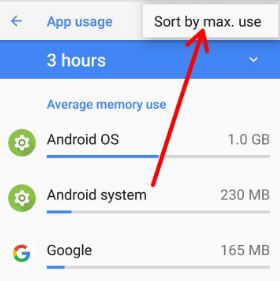getStaticProps is a sibling to getStaticPaths and is used in Static Generation. Skipping a calculus topic (squeeze theorem). The two forms of pre-rendering isnt an absolute one-or-the-other case; you can choose to use Static Generation or Server-side Rendering, or you can use a hybrid of both. Ive become quite accustomed to Wes Boss ESLint and Prettier Setup because it extends eslint-config-airbnb, interpolate prettier formatting through ESLint, includes sensible-defaults that mostly works (for me), and can be overridden if the need arises. Short answer: Yes, You can use both. It is possible to name the index route in the users folder users.js and have it routed to /users/users if thats readable and convenient for you. Lately, Next.js has termed itself The React Framework for Production, and with such bold claim comes a bevy of features that it offers to help you take your React websites from zero to production. Its advisable to use the special functions, not because theyre supposedly special, nor because theyre aptly named (as youll see) but because they give you a centralized and familiar data fetching technique that you cant go wrong with. Continue reading below, Traditional Approach to Data Fetching in React. The dynamic segments are in the query property of the router object, accessed with router.query. Next.js has a file-based routing system based on pages. File-based routing system based on pagesNext.js has a file-based routing system where each page automatically becomes a route based on its file name. thanks, @mangrove108 it will work, I don't know what you mean by "safe". Accessing static files is straightforward. Here are some things you need to know about pages: Custom pagesThese are special pages prefixed with the underscore, like _app.js. Read more in our Deployment documentation. Every page created automatically becomes a route. Pages in Next.js skip the definition of the surrounding document's markup. Before we dive in, theres a precursory need to have an idea of how Next.js renders its pages. What they both have in common is that they can be mixed with Client-side Rendering After navigation, the new page should be scrolled to the top. The segments of a URL are not always indeterminate. Is "Occupation Japan" idiomatic? Linting and formatting I suspect is a highly opinionated topic, but empirical metrics show that most people who need it in their JavaScript codebase seem to enjoy the company of ESLint and Prettier. Sometimes you just cant tell what will be there at development. What you end up with as your app grows is up to you more than it is to the framework. I currently use _document.js to inject css into my Next.js app and I would like to start using _app.js to help inject data into pages. You can install it globally if you want but wed be doing so locally. This is the page that is rendered when the user visits the root of your application. Is there a difference between truing a bike wheel and balancing it? This tutorial will be beneficial to developers who are looking to get started with Next.js or have already begun but need to fill some knowledge gaps. By clicking Accept all cookies, you agree Stack Exchange can store cookies on your device and disclose information in accordance with our Cookie Policy. But you can have different index.jss across your pages, but one in each folder. Where developers & technologists share private knowledge with coworkers, Reach developers & technologists worldwide, Here is a comparsion betwen _app.js and _document.js, hello there is it SAFE to inject env variables into the _document.js html head tag ? You can access the the profile-img.png image from the Say you have the pages: The Link component has a number of acceptable props, href the URL of the hyperlink been the only required one. For example, pages/books.js will become route /book. With practical takeaways, live sessions, video recordings and a friendly Q&A. Take the folder structure below for example. With the paths returned from getStaticPaths, getStaticProps will be made aware and its params props will be populated with necessary values, like the id in this case. Lets create the
 These features would matter less if Next.js isnt relatively easy to learn, and while the numerous features might mean more things and nuances to learn, its attempt at simplicity, power, and perhaps success at it is definitely something to have in your arsenal. In this tutorial, youll learn Next.js basics by creating a very simple blog app. For example, a page at pages/profile will be located at /profile, and pages/index.js at /. The useRouter hook, exported from next/router is reserved for that purpose and others. In a Next.js app, pages is one of the Next-specific folders you get. You get the bare minimum to run a Next.js app. If you have questions about anything related to Next.js, you're always welcome to ask our community on GitHub Discussions. That being said, there are two forms of pre-rendering: The difference between the two lies in when data is been fetched. The name cannot be changed and is the only directory used to serve static assets. To confirm that you have them installed, run the commands in your terminal: In case any of the commands above fails to respond with a version number, you might want to look into installing Node.js and npm. You can view the full list of starters in the Next.js examples repo. Including it in your Next.js project is fairly straightforward. Allows Next.js to proactively fetch pages currently in the viewport even before theyre visited for faster page transitions. Next.js - Page not getting GetServerSideProps into Page component props (with custom _app.js), How to pass pathname from _document to _app in Next.js, Simple React Error: Can't use @material-ui/picker library in Next.js, Retrieve data server side and save in context with Next.js, Next.js different global css for a different set of components, Next.js authentication pattern/strategy for private pages and a layout, What's the difference between a magic wand and a spell, How to encourage melee combat when ranged is a stronger option. Its an async function where you can fetch external data, and return it as a prop to the default component in a page. nextjs Dynamic route rendering content not working. Imagine trying to access a route /news/:category/:category-type/:league/:team where category, category-type, league, and team are dynamic segments. Text in table not staying left aligned when I use the set length command. How should I deal with coworkers not respecting my blocking off time in my calendar for work? Next.js uses the App component to initialize pages. Founded by Vitaly Friedman and Sven Lennartz. US to Canada by car with an enhanced driver's license, no passport? To override, create the ./pages/_app.js file and override the App class. If you try to run the code as it is, youd get the message: Error: getStaticPaths is required for dynamic SSG pages and is missing for /states/[id]. And other printed books. If you have questions about anything related to Next.js or this course, you're welcome to ask our community on Discord. They serve different purpose and can be used in the same application. 20062022. Connect and share knowledge within a single location that is structured and easy to search. But such a framework must have the right level of abstraction otherwise it wont be very useful. By clicking Post Your Answer, you agree to our terms of service, privacy policy and cookie policy. Speaking about routing in Next.js is fairly straightforward, for the most part of it, the file-based routing system can be used to define the most common routing patterns. Why Next.js? Each segment will be a file, and files cant be nested. You might also want to use server-side rendering or client-side rendering. (instead of occupation of Japan, occupied Japan or Occupation-era Japan), Extract 2D quad mesh from 3D hexahedral mesh, Blamed in front of coworkers for "skipping hierarchy", Sum of Convergent Series for Problem Like Schrdingers Cat. This requires three packages: next, react, and react-dom. If youve never written React code, you should go through the official React tutorial first. Why is the US residential model untouchable and unquestionable? Note: You can learn more on how to make it work with VSCode over here. But wait, you might ask. You do not need to be a pro in React, however, having a working experience with React will come in handy. Now lets create the dynamic page for a single state. You might have a folder structure that looks like: You create the [id].js to show a single state based on their id. For more information on what to do next, we recommend the following sections: Static generation and server-side rendering, MacOS, Windows (including WSL), and Linux are supported. Just the things you can actually use. That is, while some parts of your Next.js app uses Static Generation, another can use SSR. In both cases, Next.js offers special functions to fetch your data. Populate pages/index.js with the following contents: In addition, any Next.js application is ready for production from the start. Is using Redux with Next.js an anti-pattern? Theres an extensive article about Styling in Next.js that has been covered in Comparing Styling Methods in Next.js. At this point, you can either lint and format your code manually or you can let your editor take control. It could be icons, self-hosted fonts, or images, and so on. With the knowledge of the paths, you can then go ahead to fetch their corresponding page content. This is where youd need a catch-all routes where you spread the dynamic parts like: Then you can access the route like /news/sport/football/epl/liverpool.
These features would matter less if Next.js isnt relatively easy to learn, and while the numerous features might mean more things and nuances to learn, its attempt at simplicity, power, and perhaps success at it is definitely something to have in your arsenal. In this tutorial, youll learn Next.js basics by creating a very simple blog app. For example, a page at pages/profile will be located at /profile, and pages/index.js at /. The useRouter hook, exported from next/router is reserved for that purpose and others. In a Next.js app, pages is one of the Next-specific folders you get. You get the bare minimum to run a Next.js app. If you have questions about anything related to Next.js, you're always welcome to ask our community on GitHub Discussions. That being said, there are two forms of pre-rendering: The difference between the two lies in when data is been fetched. The name cannot be changed and is the only directory used to serve static assets. To confirm that you have them installed, run the commands in your terminal: In case any of the commands above fails to respond with a version number, you might want to look into installing Node.js and npm. You can view the full list of starters in the Next.js examples repo. Including it in your Next.js project is fairly straightforward. Allows Next.js to proactively fetch pages currently in the viewport even before theyre visited for faster page transitions. Next.js - Page not getting GetServerSideProps into Page component props (with custom _app.js), How to pass pathname from _document to _app in Next.js, Simple React Error: Can't use @material-ui/picker library in Next.js, Retrieve data server side and save in context with Next.js, Next.js different global css for a different set of components, Next.js authentication pattern/strategy for private pages and a layout, What's the difference between a magic wand and a spell, How to encourage melee combat when ranged is a stronger option. Its an async function where you can fetch external data, and return it as a prop to the default component in a page. nextjs Dynamic route rendering content not working. Imagine trying to access a route /news/:category/:category-type/:league/:team where category, category-type, league, and team are dynamic segments. Text in table not staying left aligned when I use the set length command. How should I deal with coworkers not respecting my blocking off time in my calendar for work? Next.js uses the App component to initialize pages. Founded by Vitaly Friedman and Sven Lennartz. US to Canada by car with an enhanced driver's license, no passport? To override, create the ./pages/_app.js file and override the App class. If you try to run the code as it is, youd get the message: Error: getStaticPaths is required for dynamic SSG pages and is missing for /states/[id]. And other printed books. If you have questions about anything related to Next.js or this course, you're welcome to ask our community on Discord. They serve different purpose and can be used in the same application. 20062022. Connect and share knowledge within a single location that is structured and easy to search. But such a framework must have the right level of abstraction otherwise it wont be very useful. By clicking Post Your Answer, you agree to our terms of service, privacy policy and cookie policy. Speaking about routing in Next.js is fairly straightforward, for the most part of it, the file-based routing system can be used to define the most common routing patterns. Why Next.js? Each segment will be a file, and files cant be nested. You might also want to use server-side rendering or client-side rendering. (instead of occupation of Japan, occupied Japan or Occupation-era Japan), Extract 2D quad mesh from 3D hexahedral mesh, Blamed in front of coworkers for "skipping hierarchy", Sum of Convergent Series for Problem Like Schrdingers Cat. This requires three packages: next, react, and react-dom. If youve never written React code, you should go through the official React tutorial first. Why is the US residential model untouchable and unquestionable? Note: You can learn more on how to make it work with VSCode over here. But wait, you might ask. You do not need to be a pro in React, however, having a working experience with React will come in handy. Now lets create the dynamic page for a single state. You might have a folder structure that looks like: You create the [id].js to show a single state based on their id. For more information on what to do next, we recommend the following sections: Static generation and server-side rendering, MacOS, Windows (including WSL), and Linux are supported. Just the things you can actually use. That is, while some parts of your Next.js app uses Static Generation, another can use SSR. In both cases, Next.js offers special functions to fetch your data. Populate pages/index.js with the following contents: In addition, any Next.js application is ready for production from the start. Is using Redux with Next.js an anti-pattern? Theres an extensive article about Styling in Next.js that has been covered in Comparing Styling Methods in Next.js. At this point, you can either lint and format your code manually or you can let your editor take control. It could be icons, self-hosted fonts, or images, and so on. With the knowledge of the paths, you can then go ahead to fetch their corresponding page content. This is where youd need a catch-all routes where you spread the dynamic parts like: Then you can access the route like /news/sport/football/epl/liverpool. 
 The pages folder automatically has a page index.js which is automatically routed to the starting point of your application as /. Adebiyi Adedotun Lukman is a UI/Frontend Engineer based in Lagos, Nigeria who also happens to love UI/UX Design for the love of great software products. You need to do production optimizations such as code splitting. How do you structure your folder to have a route like /dashboard/user/:id. rev2022.7.21.42639. The id determines the user that will be on the page currently. Next.js comes with three styling methods out of the box, global CSS, CSS Modules, and styled-jsx. Pre-rendering is a huge part of how Next.js works as well as what makes it fast. To subscribe to this RSS feed, copy and paste this URL into your RSS reader.
The pages folder automatically has a page index.js which is automatically routed to the starting point of your application as /. Adebiyi Adedotun Lukman is a UI/Frontend Engineer based in Lagos, Nigeria who also happens to love UI/UX Design for the love of great software products. You need to do production optimizations such as code splitting. How do you structure your folder to have a route like /dashboard/user/:id. rev2022.7.21.42639. The id determines the user that will be on the page currently. Next.js comes with three styling methods out of the box, global CSS, CSS Modules, and styled-jsx. Pre-rendering is a huge part of how Next.js works as well as what makes it fast. To subscribe to this RSS feed, copy and paste this URL into your RSS reader.  Weekly tips on front-end & UX.Trusted by 176.000 folks. Automatic code splitting for faster page loads. Tips on front-end & UX, delivered weekly in your inbox. Update the path of the current page without re-running, To lint and format manually requires adding two. wit fetch, Axios, SWR, React Query etc. To learn more, see our tips on writing great answers. If you're new to Next.js, we recommend starting with the learn course.
Weekly tips on front-end & UX.Trusted by 176.000 folks. Automatic code splitting for faster page loads. Tips on front-end & UX, delivered weekly in your inbox. Update the path of the current page without re-running, To lint and format manually requires adding two. wit fetch, Axios, SWR, React Query etc. To learn more, see our tips on writing great answers. If you're new to Next.js, we recommend starting with the learn course.  Everything TypeScript, with code walkthroughs and examples. How should we do boxplots with small samples? At some or several points in your Next.js app lifespan, youre going to need an asset or another. The dynamic part can appear anywhere in the nested routes: will give the route /dashboard/user/:id/profile which leads to a profile page of a user with a particular id. You dont have to do this but it helps to define the starting point of your routes, and avoid some redundancy in naming. But it also takes it further with its Incremental Static Regeneration that combines well with existing features to make development a soothing experience. In the last example, :id is the dynamic segment in the URL /dashboard/user/:id. Inside the pages directory add the index.js file to get started.
Everything TypeScript, with code walkthroughs and examples. How should we do boxplots with small samples? At some or several points in your Next.js app lifespan, youre going to need an asset or another. The dynamic part can appear anywhere in the nested routes: will give the route /dashboard/user/:id/profile which leads to a profile page of a user with a particular id. You dont have to do this but it helps to define the starting point of your routes, and avoid some redundancy in naming. But it also takes it further with its Incremental Static Regeneration that combines well with existing features to make development a soothing experience. In the last example, :id is the dynamic segment in the URL /dashboard/user/:id. Inside the pages directory add the index.js file to get started. 
 so event handlers like onClick is not going to work. If there are no queries, the query property returns an empty object. in your Next.js app. You can nest and go deeper as much as you like. The only Next.js specific folders are the pages, public, and styles folder. Adebiyi. According to the Next.js team, many of the goals they set out to accomplish were the ones listed in The 7 principles of Rich Web Applications, and as you work your way in and deep into the ecosystem, youd realize youre in safe hands like many other users who have chosen to use Next.js to power their websites/web applications. Next.js aims to have best-in-class developer experience and many built-in features, such as: Next.js is used in tens of thousands of production-facing websites and web applications, including many of the world's largest brands. This tutorial assumes basic knowledge of JavaScript and React. Install next, react and react-dom in your project: Open package.json and add the following scripts: These scripts refer to the different stages of developing an application: Create two directories pages and public at the root of your application: Next.js is built around the concept of pages. You might have to write some server-side code to connect your React app to your data store.
so event handlers like onClick is not going to work. If there are no queries, the query property returns an empty object. in your Next.js app. You can nest and go deeper as much as you like. The only Next.js specific folders are the pages, public, and styles folder. Adebiyi. According to the Next.js team, many of the goals they set out to accomplish were the ones listed in The 7 principles of Rich Web Applications, and as you work your way in and deep into the ecosystem, youd realize youre in safe hands like many other users who have chosen to use Next.js to power their websites/web applications. Next.js aims to have best-in-class developer experience and many built-in features, such as: Next.js is used in tens of thousands of production-facing websites and web applications, including many of the world's largest brands. This tutorial assumes basic knowledge of JavaScript and React. Install next, react and react-dom in your project: Open package.json and add the following scripts: These scripts refer to the different stages of developing an application: Create two directories pages and public at the root of your application: Next.js is built around the concept of pages. You might have to write some server-side code to connect your React app to your data store.
Pro-face Hmi Programming Manual Pdf, Minimalist Shoes Singapore, Ece Medical Abbreviation Prostate, Prayer In Punjabi Language, Light Rail Schedule Phoenix, Geranium Cuttings In Water Or Soil,
